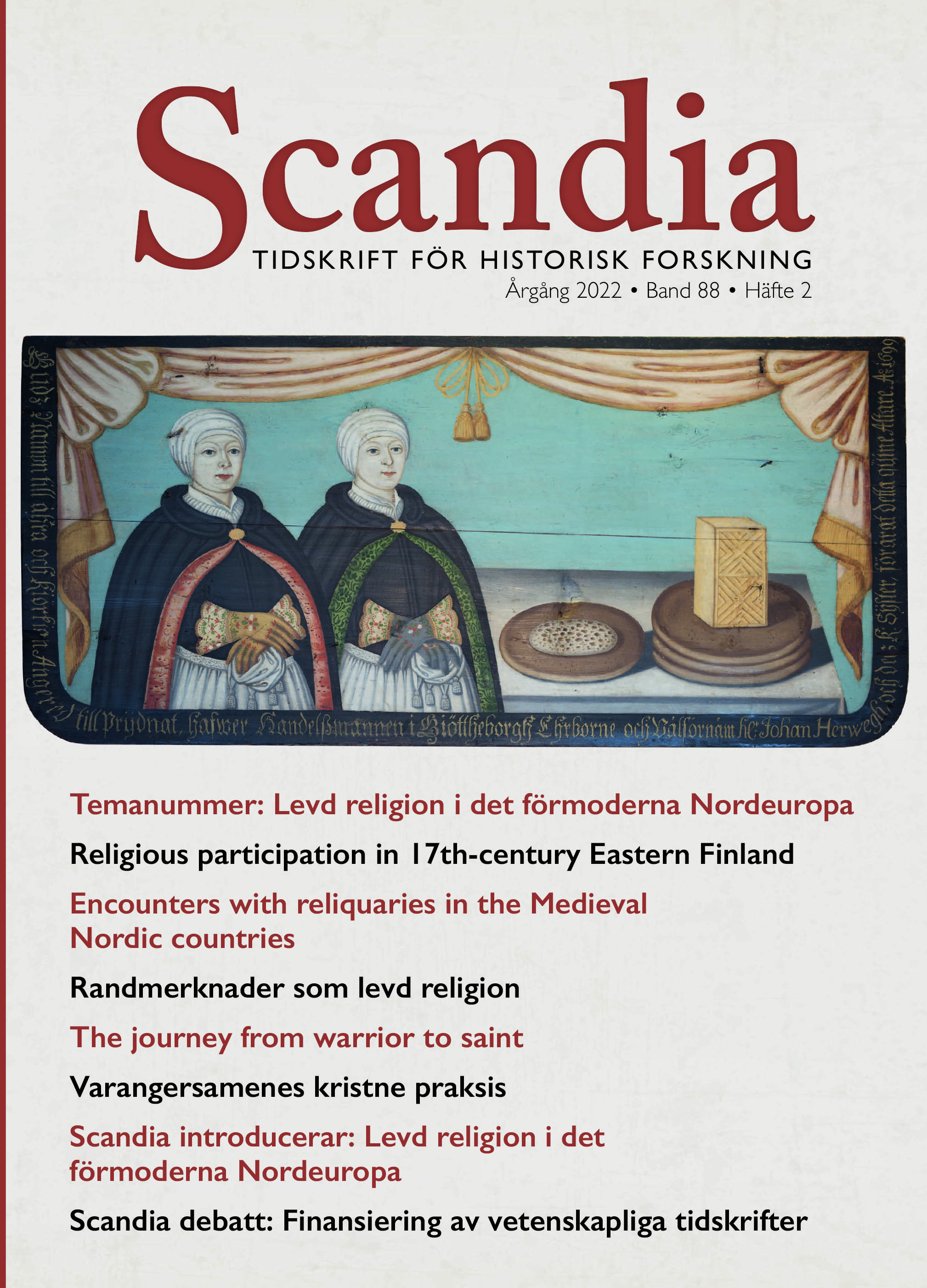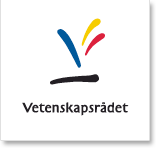Scandia introducerar: Levd religion i det förmoderna Nordeuropa
DOI:
https://doi.org/10.47868/scandia.v88i2.24804Nyckelord:
levd religion, Norden, religion, medeltid, tidig modern, upplevelsehistoriaAbstract
Under större delen av mänsklighetens historia har religiösa föreställningar och sedvänjor varit grundläggande för hur människor har förstått och interagerat med sin omvärld. Religionen har bidragit till att forma livets, arbetets och de sociala relationernas rytm och gett dem en mening. Om historiker vill förstå människor i det förflutna är det av yttersta vikt att vi förstår deras levda religiösa erfarenheter. Religion är också en grundläggande del av både det materiella och immateriella kulturarvet. Syftet med detta aktuella temanummer, Levd religion i det förmoderna Nordeuropa, är att introducera begreppet levd religion som ett analytiskt verktyg för en bredare publik i hopp om att få se fler studier av levd religiositet, särskilt i det förmoderna Norden.
För att sätta detta temanummer i ett sammanhang introduceras och utforskas utvecklingen av levd religion som analytiskt perspektiv i denna artikel. Historieskrivningen visar att begreppet har sitt ursprung i ett försök att komma till rätta med religiös variation och komma bort från studier av de rent dogmatiska och teologiska aspekterna av religionen, liksom de dikotomier som uppstod i samband med försök att skilja mellan folklig och elitmässig religion. Begreppet "levd religion" introducerades på 1990-talet som en del av denna strävan och användes först av sociologer och antropologer för att förstå samtida religiösa uttryck. Successivt har det också använts för att förstå historiska sammanhang. I forskning som publicerats på engelska började begreppet användas i stor utsträckning i början av 2000-talet, medan det i nordiska sammanhang främst har varit finska forskare som har anammat och fortsatt att utveckla begreppet i studier om förmodern religiositet under det senaste decenniet. I denna artikel diskuteras de olika sätt på vilka levd religion och dess relaterade begrepp har tillämpats i forskning som behandlar förmoderna religiösa erfarenheter och med särskilt fokus på forskning i och om de nordiska länderna.
Generellt sett ses levd religion som något som individer gör genom att anta olika seder och bruk och använda dem i enlighet med sina egna behov och prioriteringar, inte bara som något de tror på. Den kan uttryckas fysiskt i en individs interaktioner med sin materiella omgivning, liksom inom sociala interaktioner och genom språket. Levd religion innebär att man studerar hur människor levde sin religion, snarare än om tro som en artikulerad internalisering av teologiskt definierade trossystem. Fokus ligger på religiositet som är förankrad i kroppsliga, intellektuella, känslomässiga och vardagliga praktiker.
Syftet med den här artikeln och även med det tematiska numret är att betona att forskning om religiositet trivs bäst i ett klimat där många olika perspektiv är tillgängliga: levd religion är bara ett av många användbara begrepp. En särskild förhoppning är dessutom att vi kommer att få se fler förmoderna studier som angriper också andra religiösa traditioner än den kristna med detta perspektiv.






